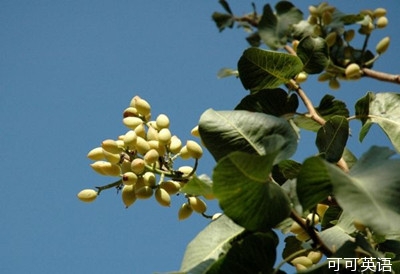Ordinarily, you'd call a pistachio a pistachio. But if you're, for example, an immigrant from China and you've just seen a Ming vase, you might call a pistachio a “happy nut.” Because visual cues can affect language in people with multiple cultural experiences. That's according to a study in the Proceedings of the National Academy of Sciences.
通常,你把 pistachio 称作 pistachio。但如果你是来自外国,比如说中国的移民,假使你刚看到一只明代的花瓶,那么你就可能会把 pistachio 称为“happy nut”。因为视觉提示可以影响有多重文化背景的人的语言。这是根据发表在《美国科学院院报》上的新研究所得出的结论。
 Researchers performed various tests with students who had come to the U.S. from China. In one, the students heard a recorded conversation, in English, about campus life. But some looked at a Chinese face while they listened, while others saw a Caucasian face.
Researchers performed various tests with students who had come to the U.S. from China. In one, the students heard a recorded conversation, in English, about campus life. But some looked at a Chinese face while they listened, while others saw a Caucasian face.
研究人员对许多华裔美国留学生进行了各种测试。其中一种测试就是让学生听一段英语的谈话录音,主题是关于校园生活。在听的同时,有些学生看到的是中国人的面孔,而其他人则看到的是白种人的面孔。
The students then spoke about their own lives. And the Chinese-American students who had listened while looking at a Chinese face spoke English more slowly and less fluently than those who listened while looking at the Caucasian face.
然后让学生们讲述自己的生活。边听边看着中国人脸孔的华裔美国学生说话的语速比那些边听边看着白种人面孔的学生慢得多。
In another test, when the students were exposed to Chinese icons, they were more likely to translate from Chinese into English literally. Thus pistachios became “happy nuts,” which is the name in China.
在另外的测试中,当学生接触到中国元素时,他们会更有可能按字面意思把中文翻译成英文。因此 pistachios 就变成了“happy nuts”,就是中文“开心果”的直译。
This phenomenon demonstrates that immigrants struggling with a new language can face unusual and unanticipated challenges. And that what you see can affect what you say.
这种现象说明在新的语言环境下抗争的移民要面临不寻常和不可预测的挑战。那就是你所看到的会影响你所说的。
 Researchers performed various tests with students who had come to the U.S. from China. In one, the students heard a recorded conversation, in English, about campus life. But some looked at a Chinese face while they listened, while others saw a Caucasian face.
Researchers performed various tests with students who had come to the U.S. from China. In one, the students heard a recorded conversation, in English, about campus life. But some looked at a Chinese face while they listened, while others saw a Caucasian face.











